Recommendations for raising and training spaniels
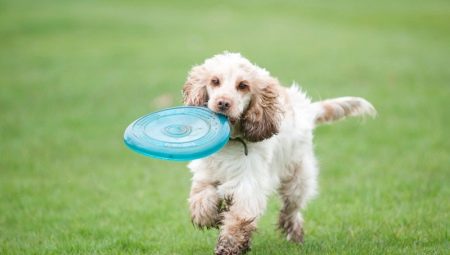
Raising a dog is a long and consistent job of developing certain skills of a pet. Together with training, it contributes to the socialization of the animal, makes adjustments to its character and makes it easier to care and maintain. In this article, we will dwell on the nuances of raising and training the breeders' favorites - spaniels.
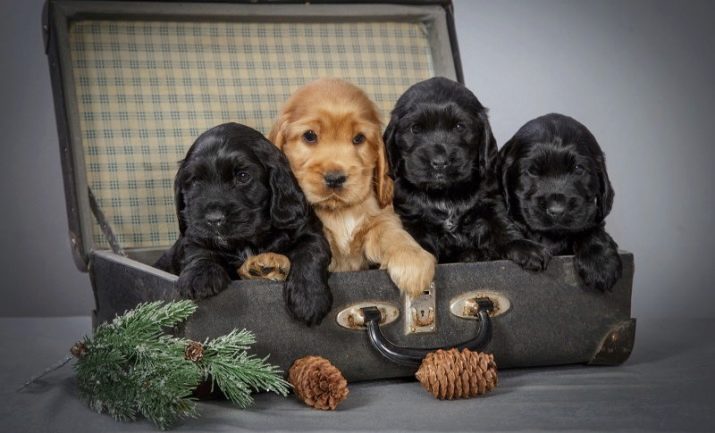
Features of behavior and character
The nature of the spaniel can be different, which is explained not only by its varieties, but also by the conditions in which it is placed after the nursery. Be it English, Russian or American Cocker Spaniel, there are certain rules: in order for a dog to grow up as a friend and helper, in addition to daily activities and regular training, it needs human care, attention and affection. Despite his physique, spaniels are distinguished by their gambling and playful nature.

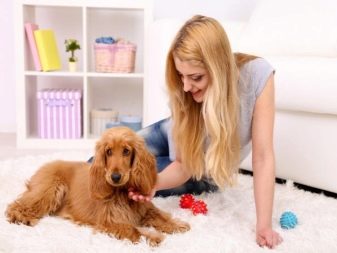
Being on a positive wave, they need timely training, otherwise they risk becoming stupid.
Spaniels are very friendly and inquisitive. They strive to be in the company of those who deal with them, love and feed them. In the absence of due attention and with long loneliness, destructive behavior is characteristic of them. That is why the breeder of these dogs must have enough time so that he can raise a good friend and loyal companion from a pet.
Dogs of this breed a willingness to please its owner is inherent. This trait can be taken as a basis for education and training, achieving through it facilitating the conduct of classes.Dogs understand what is needed from them, they subtly feel the intonation of the voice and the manner of speech. They possess excellent adaptability, patience, and energy.
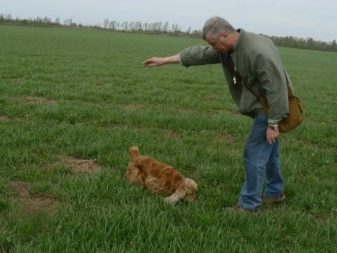
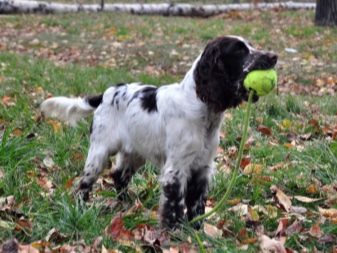
But, along with the merits, the character also has negative sides. For example, animals can be stubborn and independent. The dog can weigh the relevance of each given command, considering whether it is really worthy of execution.
With improper training, the pet takes over the role of the educator and often manipulates the owner.
At what age to start educating?
As a rule, puppies are taken from the kennel at 2 months. At this time, they are already getting acquainted with such a concept as socialization, they have a strengthened psyche. Two-month-old puppies are active, learn to play with each other, stand well on their paws, run a lot and constantly move. Considering that the period of getting used to a new place and the owner can take 6-7 months, the sooner the puppy is taken, the better.
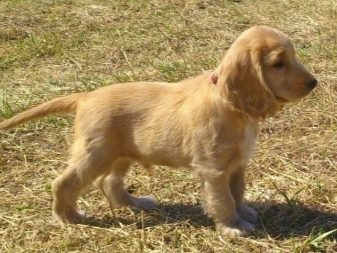
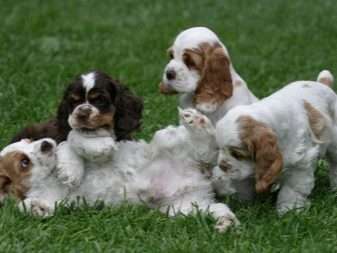
However, experts recommend that you have time to pick up the puppy no later than three months.
This is explained by the fact that at a later age the dog will not eagerly strive for training and education. Moreover, the speed of learning may slow down, willfulness and persistence appear. So, the minimum age to start training is 2 months, the maximum is 3.
The subtleties of raising a puppy
The upbringing of the baby begins immediately after he appears in the house, choosing a day off for this. If you give him a lot of time to adapt, you can waste time in suppressing inappropriate behavior. In the early days, you can put a heating pad or a small fur mattress in the bed. Under no circumstances is a puppy placed in a person's bed. The puppy is accustomed to the place of the puppy from the first day of stay in the new house.

To do this, pat on the litter with a hand and say the word "place". Along with this, the baby begins to accustom himself to his nickname. This is an important step on the path to training, because first the dog must learn to understand when the owner is referring to it. On the very first day, the puppy can be washed so that it dries up and runs in plenty until the evening. Then it is washed no more than once a month.
The owner feeds the puppy, he also walks, strokes, communicates and plays when the baby requires attention.
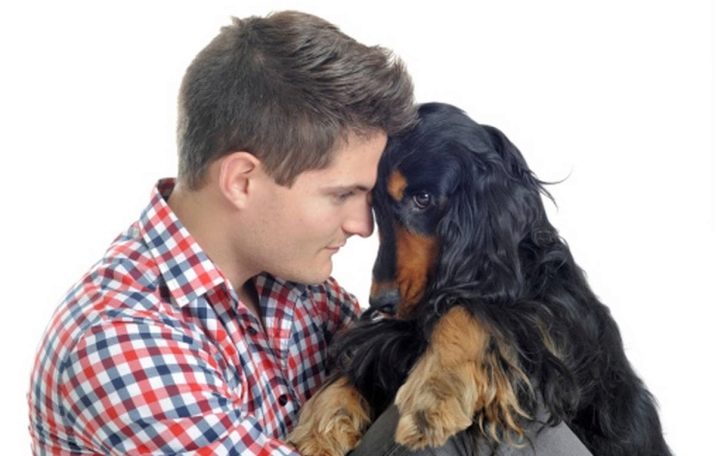
However, it is impossible to spoil the spaniel too much, since in the process of upbringing the dog understands that there are times when the owner cannot pay attention to it.
There should not be any raising of the voice, as well as shouting in communication and education. They wipe their paws and stomach after each walk, wash them if necessary so that dirt from the street does not enter the rooms of the house.
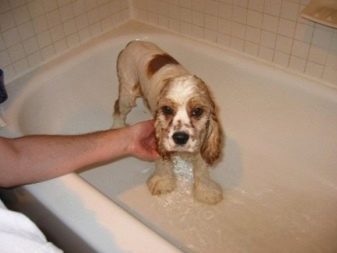
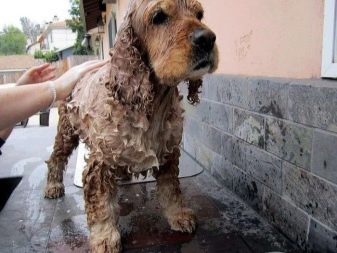
It is especially important for the baby to be taken care of so that he does not feel lonely after separation from his mother dog. They call the puppy by name during play, pet and talk to him. They buy toys for the kid, play with him, at the same time talking and addressing him by name. As you understand, you can teach the puppy elementary commands, such as "no", "fu", "to me." In the first months of life, when pronouncing the command, there should be no unnecessary words and huge rants: the pet simply does not understand what is required of him.
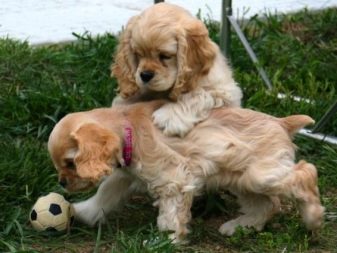

Along with accustoming to the nickname, own place and some simple commands, the owner must regularly carry out hygienic procedures. The puppy should not be allowed to go around dirty in the house, you need to clean his ears, comb his coat, take care of the condition of his teeth. If you teach your baby to hygiene from childhood, it will become the norm for him, and therefore he will not be nervous during it.

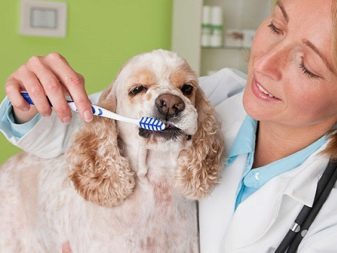
If during the game the pet grabbed any object with its teeth, you cannot pull it out by force.
You can't keep your spaniel on a leash all day, the baby can break off the chain, whine and complain in his own way, which will bore all the neighbors. In addition, he can become aggressive, which can turn into a parenting problem.
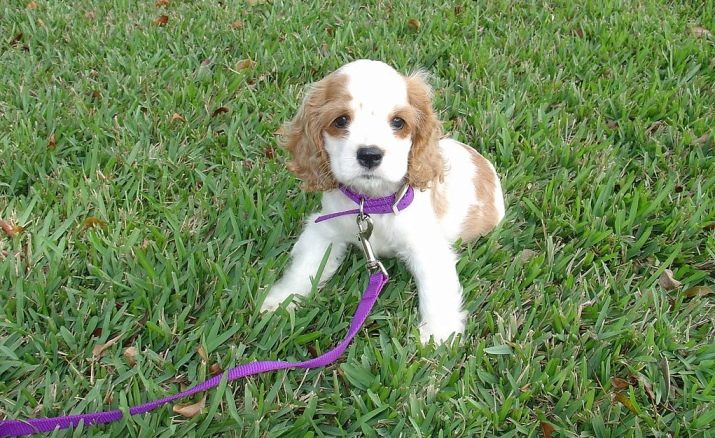
At first, a dog living in an apartment building will have to be carried out for a walk in his arms. Someone uses a backpack for this, and the puppy quickly realizes that he is going for a walk as soon as he sees the backpack in the owner's hands.
How to train a dog correctly?
When the spaniel turns 3-4 months old, it must be taught to the command "next to". In addition, at this time it is time to teach your pet the commands "stop", "show your teeth", "collar". At this time, the baby understands the hours of food intake, if the owner feeds him on time. For parenting and training to be successful, there are a few key rules to keep in mind.
- Everything has its time. If you shift education and training from day to day, writing off everything to lack of time, you will not be able to raise a dog.
- Regularity. It is necessary to train a pet every day so that the animal can consolidate skills, learning the norms of behavior.
- Moderation of load... You can not mix several commands at the beginning of the training, as the pet will confuse their meaning.
- Patience. If the baby is following the command correctly, it is necessary to encourage him, if he cannot learn the lesson, you cannot raise his voice to him and offend him with a lack of attention.
- A playful approach. Spaniels are cunning animals, and therefore monotonous training can quickly get bored with them. Without a creative approach, they will get bored and try to take the parenting initiative into their paws.
- Personal contact. You should not shift education and training to someone from the outside, because personal communication is the key to a trusting relationship between the owner of the dog and the pet itself.
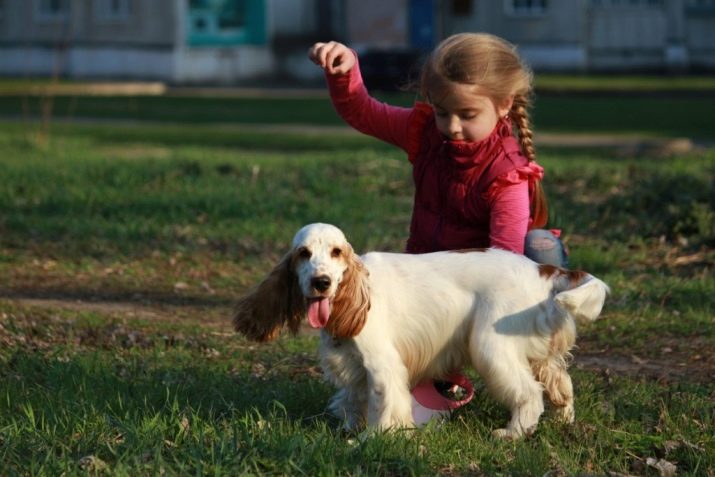
Water and swimming training
At about six months, the puppy should already understand the command "bring me". At this time, he is ready to learn how to swim, for which the owner must choose a sunny day.
A small reservoir with sloping banks is suitable for this. In order not to frighten the dog, it is impossible to deliberately pull it into the water.
For the first time, you can use a wooden stick familiar to your pet.
It is thrown into the water so that it is in the water at a distance of about one meter from the shore. Immediately the owner gives the command "give", but the stick should not be where it will be deep. For the fact that the spaniel will bring it, he is encouraged by affection or a delicacy. If the dog is not afraid of water, you can try to throw the stick a little further.
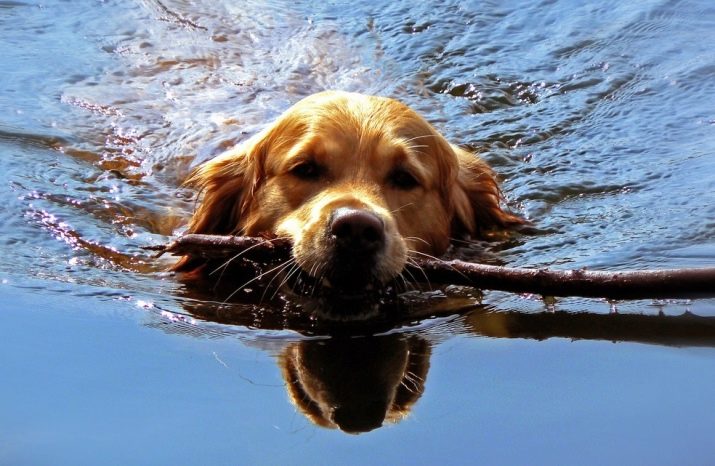
As a result, time after time moving away from the shore in search of a stick, its paws will stop reaching the bottom, which will cause a swimming reaction. However, you cannot mock your pet by constantly throwing a stick into the water: after several throws, it needs a rest. If you do not switch her attention to running or simple rolling in the grass, training will seem to her to be something exhausting, and therefore she is unlikely to want to repeat this in the future.
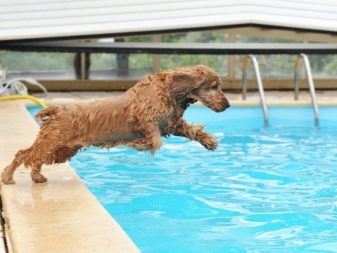

Basic commands
Spaniel training involves different commands. For example, a trained dog must understand not only his place, but also his name: she must be able to swim, walk next to the owner, sit or lie down at his request. Besides, the animal must have an understanding of the concepts of "slow motion" and search by "shuttle". He must have developed hunting skills, guard qualities and jumping.
A trained dog has been going to the toilet on the street since four months. She is collar and leash accustomed and responds actively to the command "walk". Team outfit "Give" and "sit" she perfectly understands, as well as the command as "Look for" which he readily learns, due to the use of various delicacies for this.
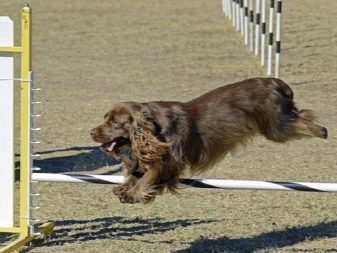
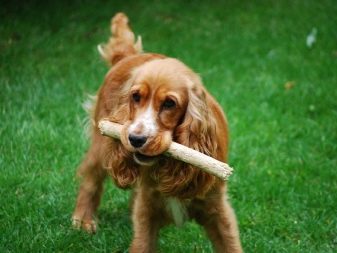
In order for the owner to quickly teach the pet to the toilet, at first it is necessary to provide the puppy with a box of sawdust. By doing this, he will reduce the puppy's desire to cope with his needs, anywhere.
In the future, you will need to take him out on the street more often, at the same time, walks should be frequent, but short-lived. Over time, their duration increases, and the number decreases.
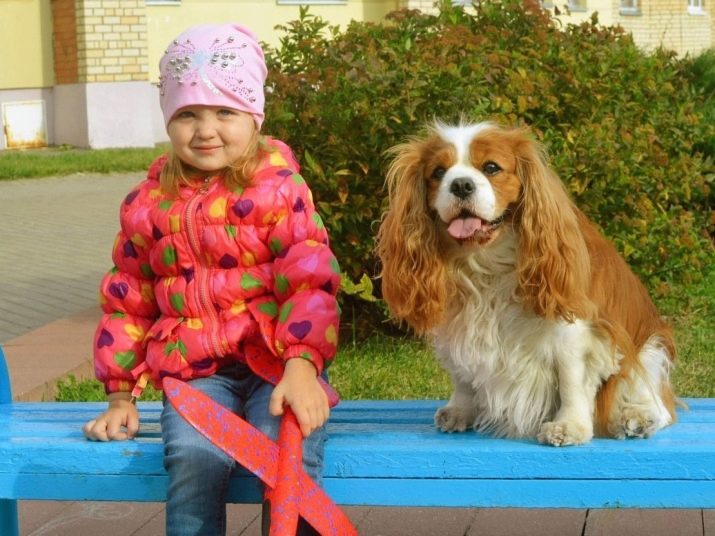
General recommendations
Spaniel training at home is hard work that does not tolerate inattention and letting the situation go by itself. During training, the dog must learn not only to follow any commands given by the owner. She must also understand and stop certain actions at the command of the owner.
The training of I.P. Pavlov can be taken as the basis for training., allowing you to develop reflexes taking into account the conditioned and unconditioned stimuli. The trainer can influence the dog in different ways, for example, encouragement or prohibition. To turn the reward into a conditioned stimulus, you need to connect some delicacy to it. With frequent rewards, the dog will quickly understand what is required of it, and this technique will have a beneficial effect on its attachment to the owner.


Forcing the spaniel to train is useless. Neither the jerk of the leash, nor the blow of the rod, nor the threatening intonation will make the spaniel obedient and docile. On the contrary, it is they who will become the reasons for the dog's insecurity and fear of the owner. To prohibit the pet from doing something, just say the command "no". Of course, at first it will not be easy to get used to the same leash or collar.
However, rather than shouting and hitting the animal, it is more expedient to come up with a more positive way to train it.
You cannot jerk the collar sharply, even if the pet really wants to run away to explore the world around it.
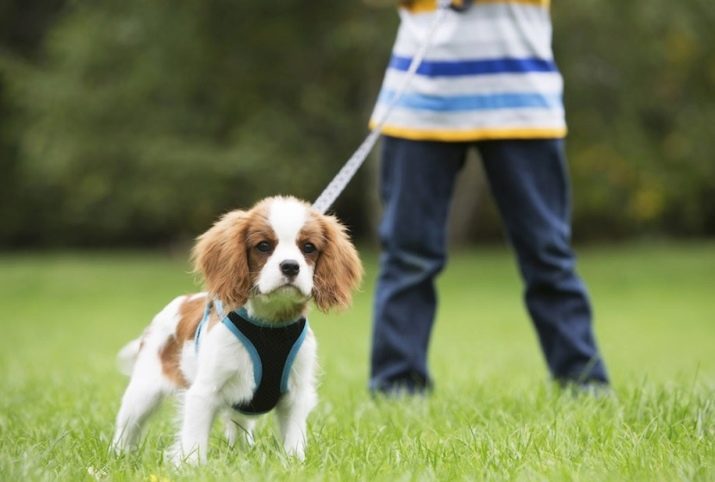
By this, the owner shows superiority, but this does not contribute to the proper relationship. The principle of learning should be based on team unity, action and encouragement.
For example, the command "sit" is taught by light pressure on the puppy's croup. Once the pet has sat down, it is praised and encouraged. The take command is taught during one of the feedings. Food is given to him on the command “take”, thereby teaching him to endure, because the dog must understand the order. Otherwise, for example, while hunting, she may rush after the game ahead of time.


They begin to work out the command "no" from the "young claws", at the bowl. In this case, food is given on the command "take" so that the puppy understands that he is allowed to eat. At the initial stages of training the command "no", you can use a leash. In the future, it is removed, trying to avoid physical impact. The command "to me" is considered one of those that puppies get used to faster than others.
You can teach a puppy to it literally in a month, using reward techniques. You can call him to yourself, treating him with any delicacy. However, when calling your pet, you must remember and follow the order of actions. First, they give a command, then they show a treat, and only after that comes reinforcement. When teaching, you can use a whistle: it will serve as a kind of signal for the execution of the command.

For more information on training your spaniel, see the video below.






































